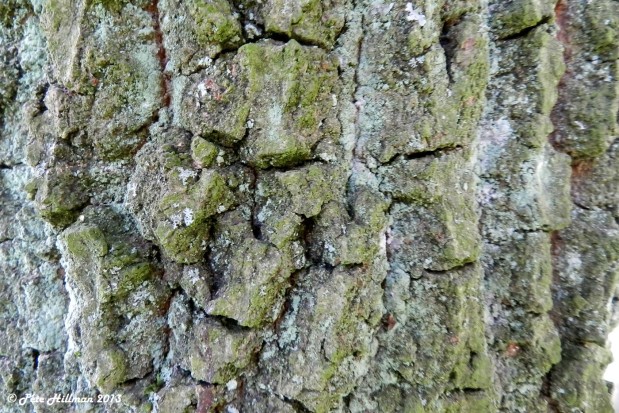Quercus x hispanica ‘Lucombeana’
This was quite an unusual oak I came across, and which I had never seen before. It is a natural hybrid between the Turkey Oak (Quercus cerris) and the Cork Oak (Quercus subur). Growing up to a height of 35m, this is a tall semi-evergreen tree with heavy branches on a relatively short bole. The bark can be variable, greyish or light, furrowed, smooth or corky. The leaves are long, glossy green, toothed and 4-7cm long. They are grey and finely felt-like beneath. They remain on the tree until spring (unless conditions are very harsh in winter when they may fall) before falling and then regrowing quickly. The acorns appear in autumn in small mossy cups and are 2.5cm long. There are several variants including back crosses which may add to confusion during identification of specimens in the field. These oaks can live for up to 240 years or more.
Grown as an ornamental in parks and gardens, especially in and around Exeter. William Lucombe, a nurseryman from Exeter, Devon, discovered this hybrid between the Turkey Oak and the Cork Oak quite by chance in 1762. He noticed how the leaves remained on the tree throughout autumn and winter, and decided to grow it himself. It was named after his nursery, and is still common around parks and gardens in Exeter, especially near the coast. It may also be found elsewhere in mature parks and gardens in the south of England, less so further north. One of the original saplings (perhaps the first to be planted outside of Devon) was planted in Kew Gardens in 1763, which was later moved and replanted in 1846, and is still alive today.
Both the Turkey Oak (a deciduous tree) and the Cork Oak (an evergreen tree) grow wild in south-western Europe where they freely crossbreed naturally. These hybrids are called ‘Spanish Oaks’ (Quercus x hispanica), and with the exception of harsh weather conditions, they keep their leaves throughout autumn and winter, up until the new growth appears in spring.
William Lucombe was so taken with this oak that he later felled the original specimen in 1785 to provide wood for his own coffin. He kept the boards under his bed until he died. When he did die at the ripe old age of 102, it was discovered the wood had decayed and timber was used from one of his early graft propagations to craft his coffin instead.
Photographs of Lucombe Oak (Quercus x hispanica) ‘Lucombeana’, taken September 2013, Warley Woods, Staffordshire. © Pete Hillman 2013. Camera used Nikon CoolPix P500.




